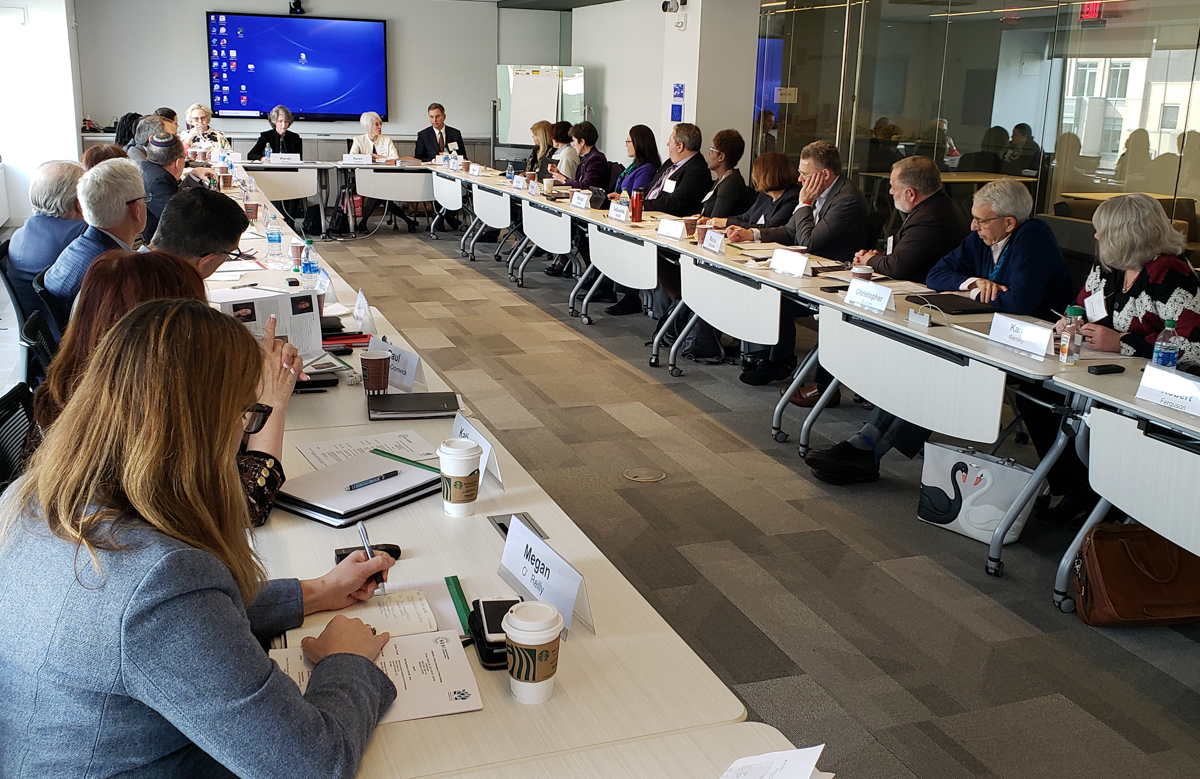Project & Program Updates
Swerve Meets Again – This Time in Washington, D.C.
Swerve is Pittsburgh Regional Health Initiative's (PRHI) latest effort to reduce America's appalling medical error rate. With partners around the country, PRHI has worked for more than two decades on improvement, but the solutions aren't working fast enough to save hundreds of thousands of lives. Taking advantage of the possibility of introducing bold solutions into the platforms of the 2020 presidential candidates, PRHI decided to swerve.
A swerve is a break from tradition, a swift and meaningful change in direction from past solutions and conventional wisdom. Working with our longtime partner, the Network for Excellence in Health Innovation (NEHI), we launched three, day-long national conversations with select healthcare leaders who are knowledgeable about aspects of patient safety to refine a viable "swerve" solution.
The second of three day-long meetings took place in Washington D.C. on February 24th, following a January engagement in Boston. This time, the 29 attendees – representing leaders from business organizations, healthcare providers, nonprofit and public safety organizations, foundations, consumer organizations and healthcare technology innovators – brought an inside-the-beltway perspective on creating a National Patient Safety Authority (NPSA) and Public Option (PO).
Expertly facilitated again by Ken Segel, co-founder and managing partner of Value Capture, the format elicited rapid fire, 3-sentence responses from participants whose ideas were captured on a screen for all to see. The day-long conversation was lively, substantive, respectful and productive.
The group wrestled with two big questions. First, they explored How could a National Patient Safety Authority (NPSA) be designed and with what functions to achieve a rapid and profound reduction in patient harm? The discussion considered the roles of effective, existing federal authorities and evoked likely data, organizational and political challenges – together with possible strategies for addressing them.
Second, given the popularity of a Public Option in recent voter polls, participants were asked, How could a Public Option be designed to improve patient safety, quality and affordability in the U.S. – and how might the PO connect with a Patient Safety Authority? Here the discussion solicited ideas for the best features of an insurance model for promoting quality of care, patient safety and affordability.
A third, and final, meeting is scheduled to take place in San Francisco on April 2nd, after which, the excellent recommendations shared in all three meetings will inform a proposal to 2020 presidential candidates to consider as part of their platforms.
Related Posts
By accepting you will be accessing a service provided by a third-party external to https://www.jhf.org/
